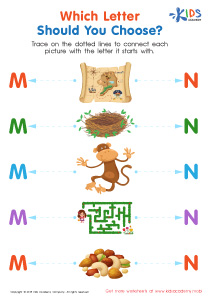Fine Motor Skills Normal Lowercase/Small Letters Worksheets for 5-Year-Olds
14 filtered results
-
From - To
Enhance your 5-year-old's fine motor skills with our engaging Lowercase Letters Worksheets! Designed specifically for young learners, these printable activities help children practice letter recognition and writing through fun, interactive exercises. Our worksheets feature normal lowercase letters that promote proper formation and control, essential for developing handwriting proficiency. As kids trace and color, they're refining their hand-eye coordination and dexterity. These worksheets make learning letters enjoyable, fostering a love for reading and writing from an early age. Perfect for parents and educators looking to support early literacy, these resources are a valuable addition to any preschool curriculum. Download and start exploring today!
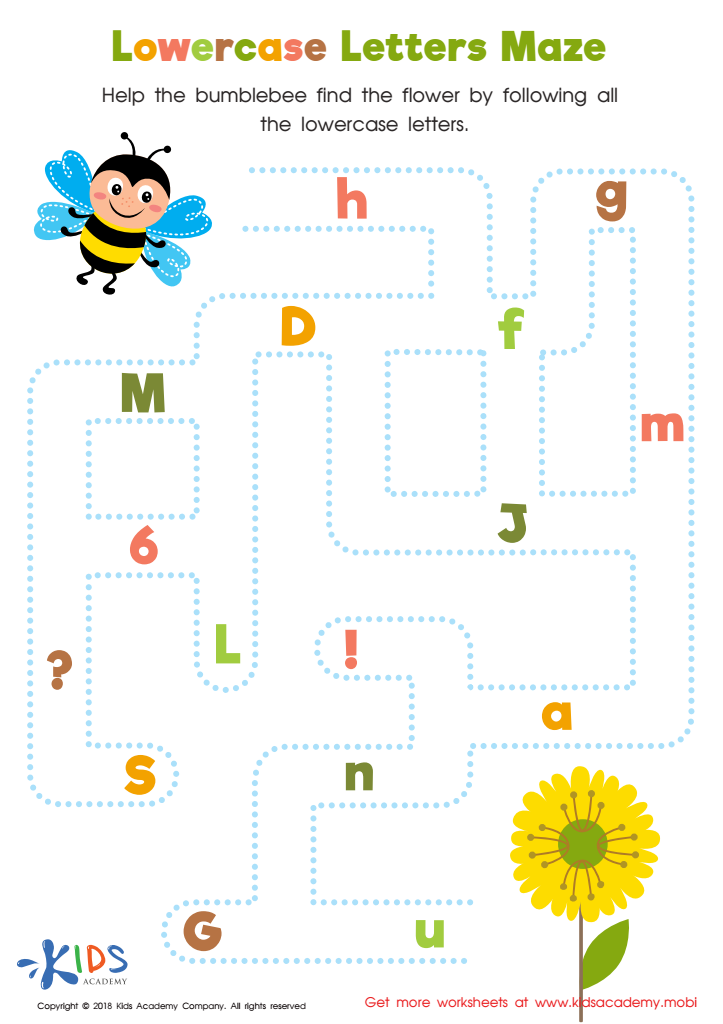

Lowercase Letters Maze Worksheet
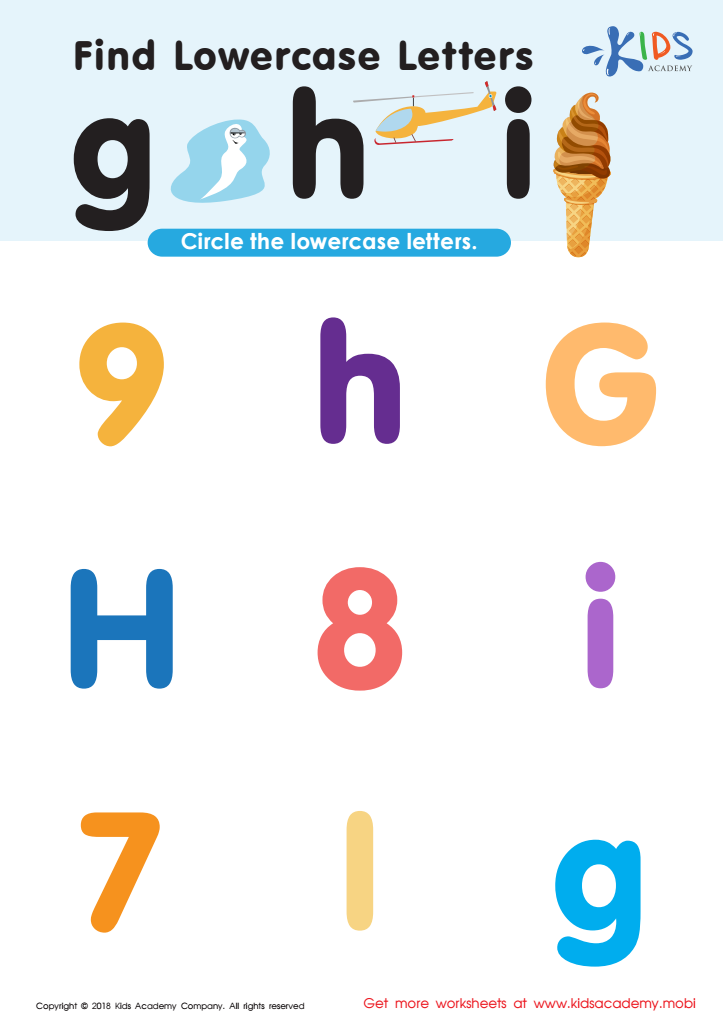

Find Lowercase Letters g h i Worksheet
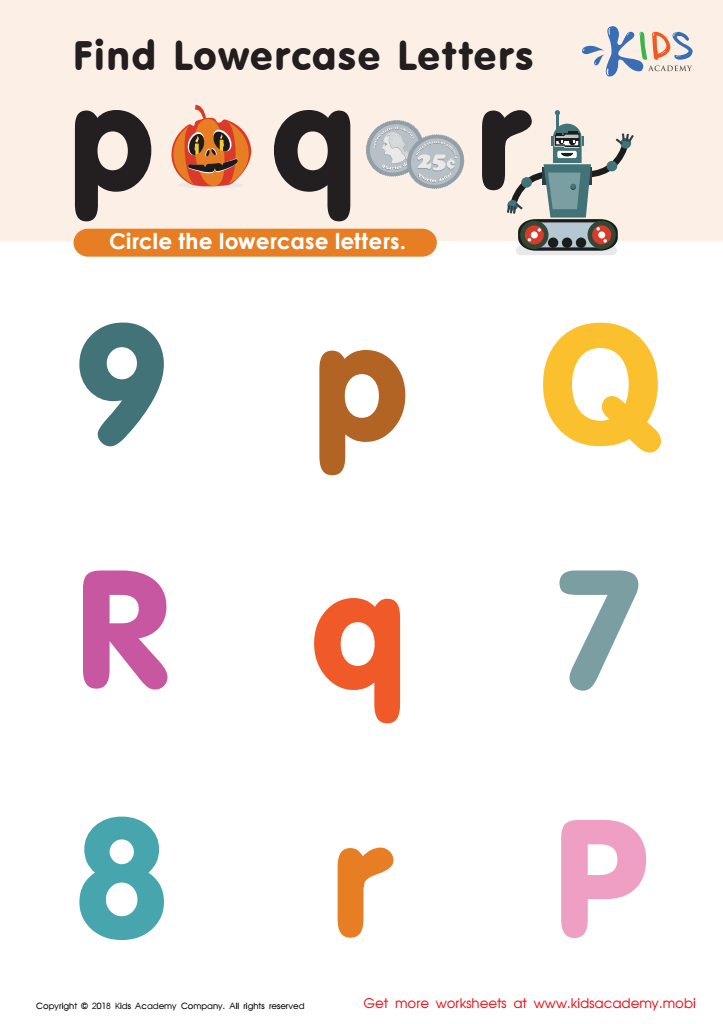

Find lowercase Letters p q r Worksheet
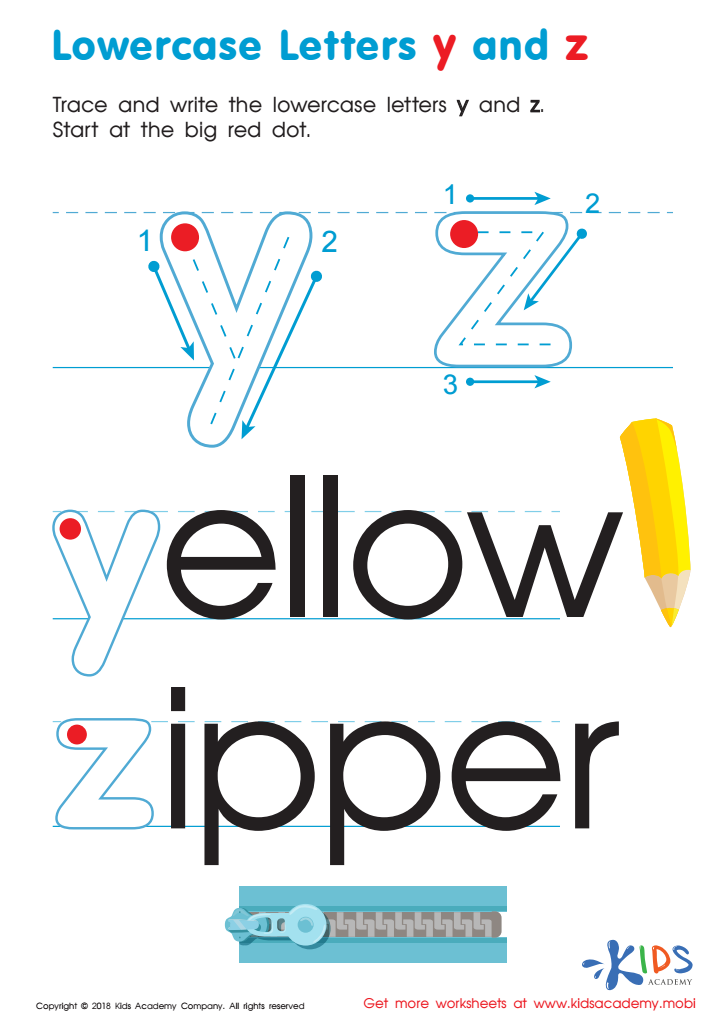

Lowercase Letters y z Worksheet
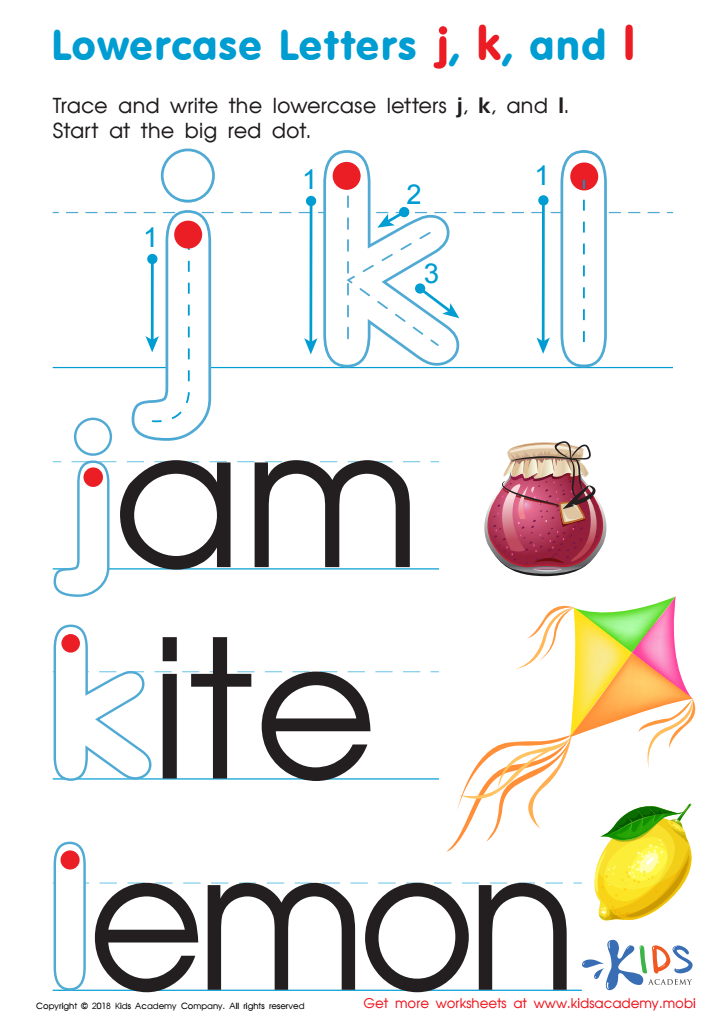

Lowercase Letters j k l Worksheet
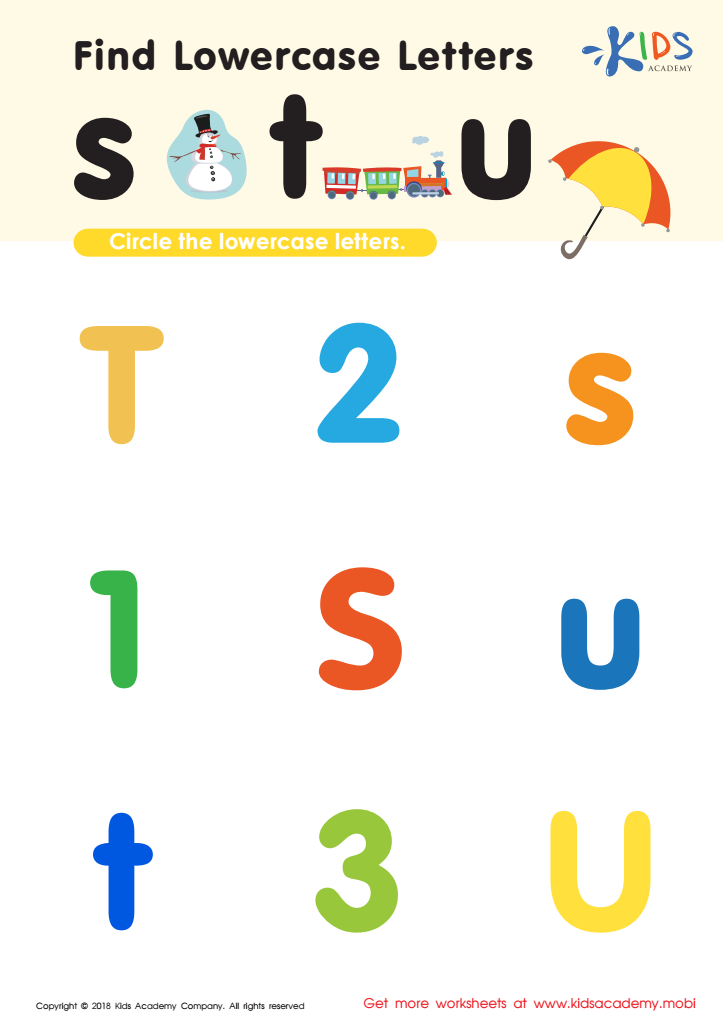

Find lowercase Letters s t u Worksheet
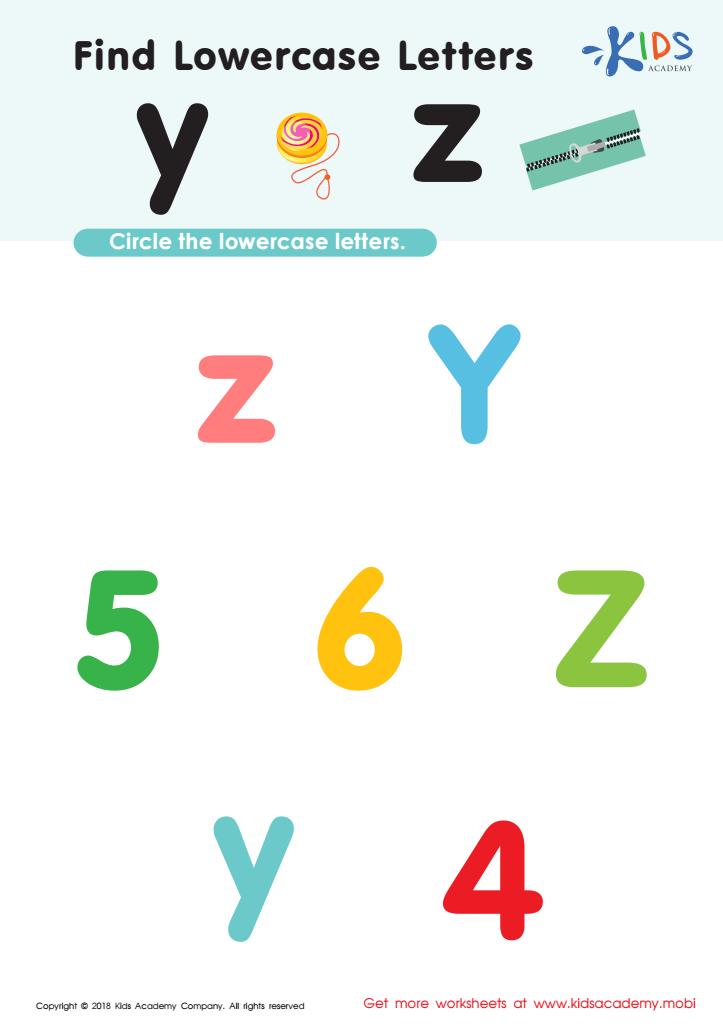

Find Lowercase Letters y z Worksheet
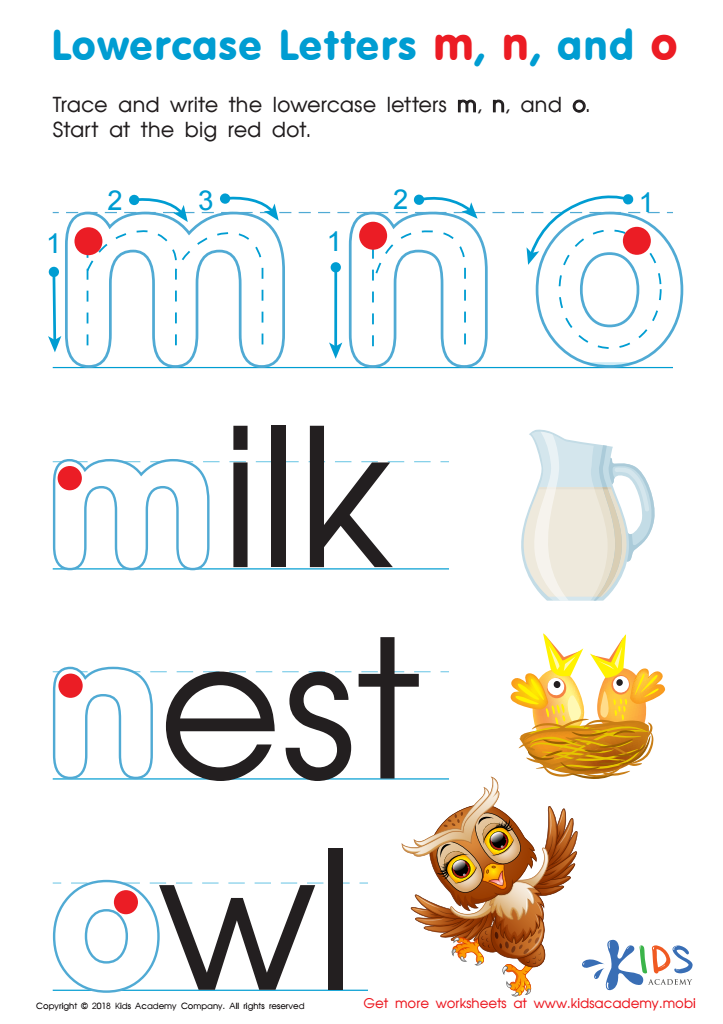

Lowercase Letters m n o Worksheet
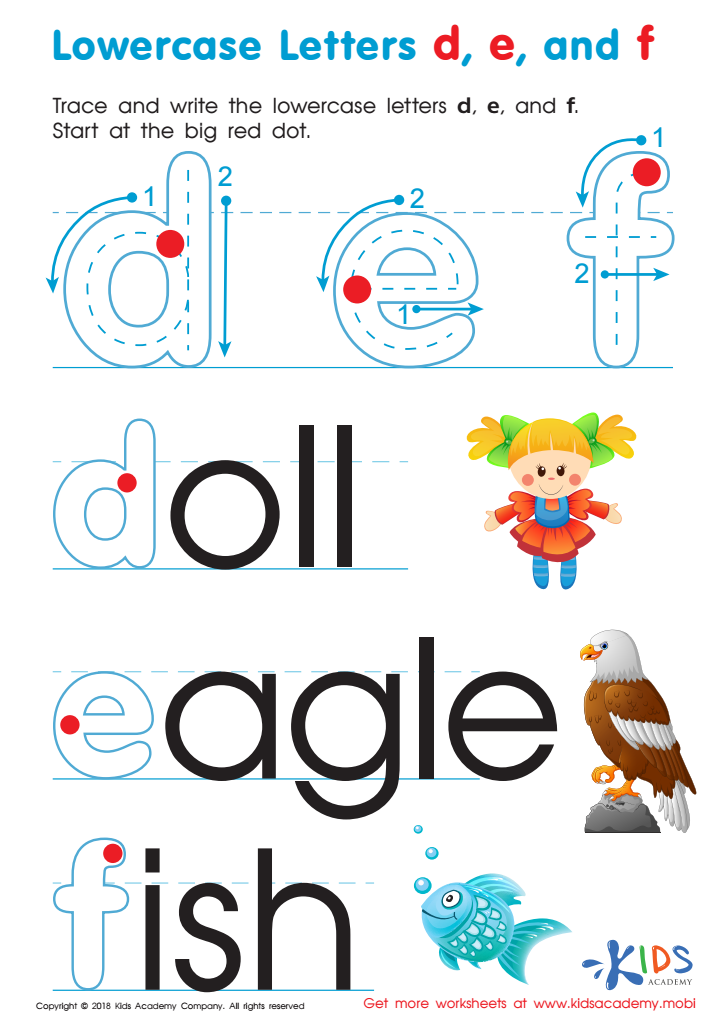

Lowercase Letters d e f Worksheet
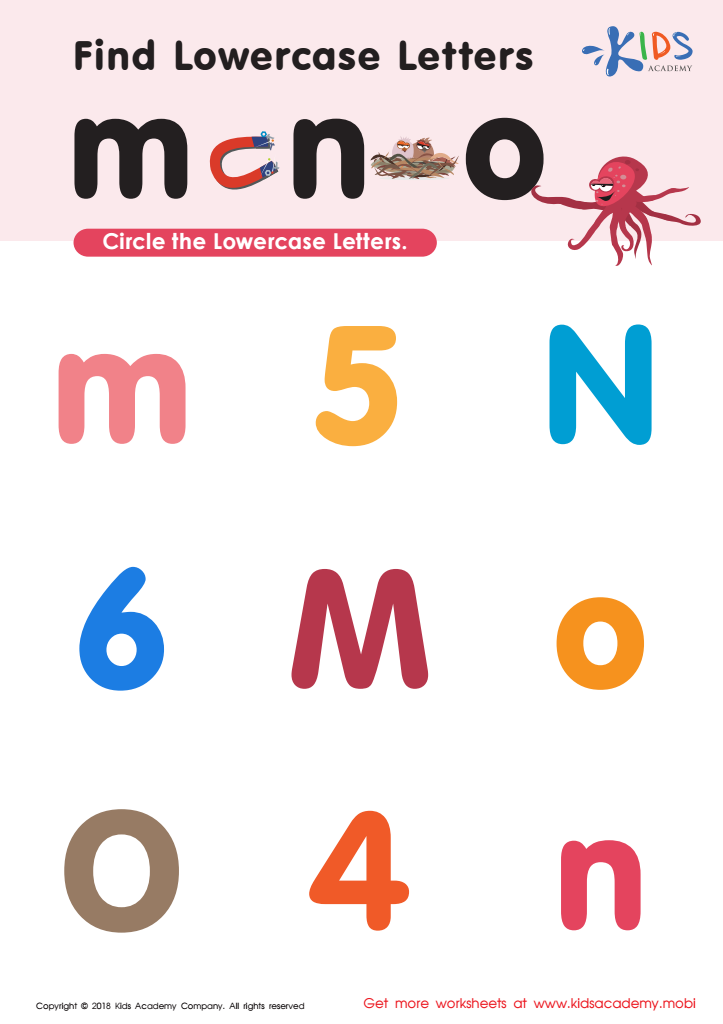

Find Lowercase Letters m n o Worksheet
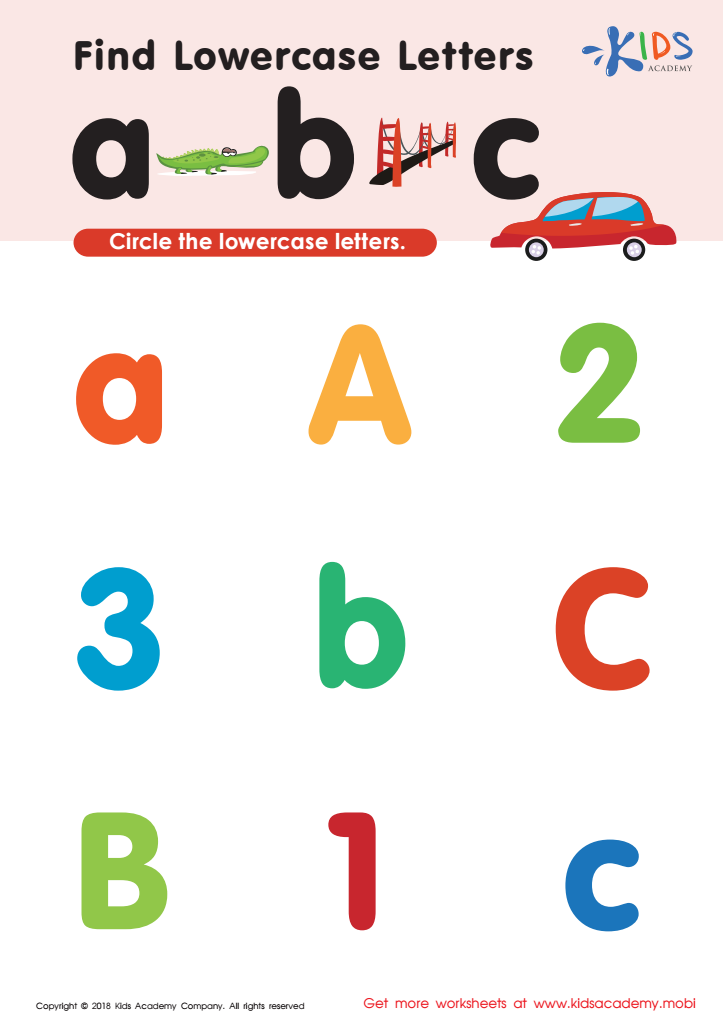

Find lowercase letters a b c Worksheet
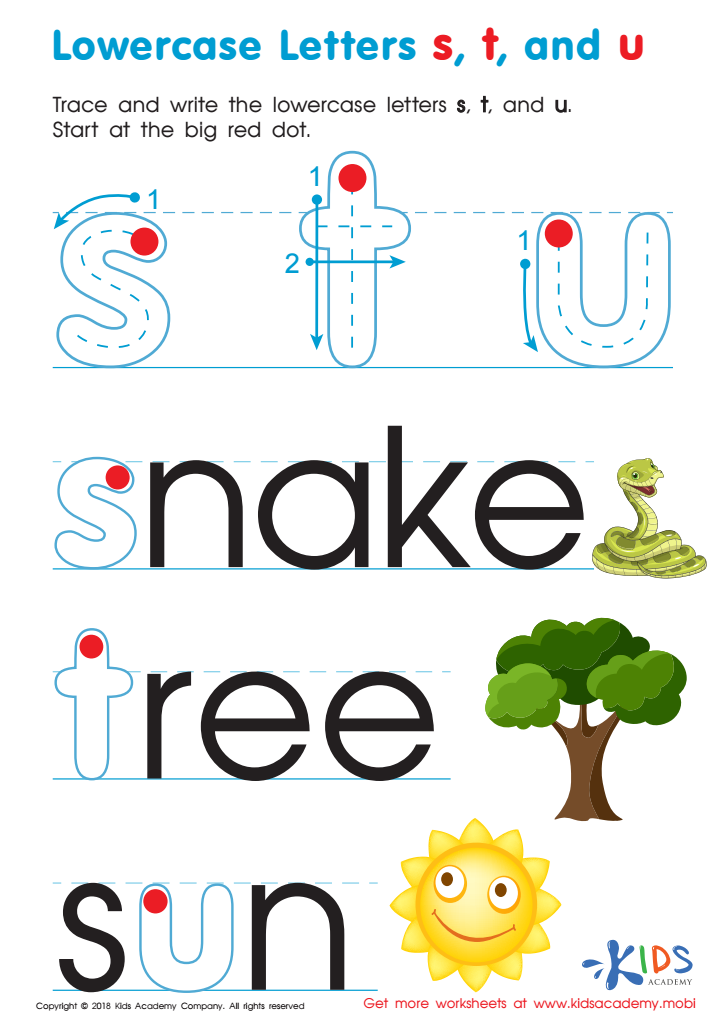

Lowercase Letters s t u Worksheet
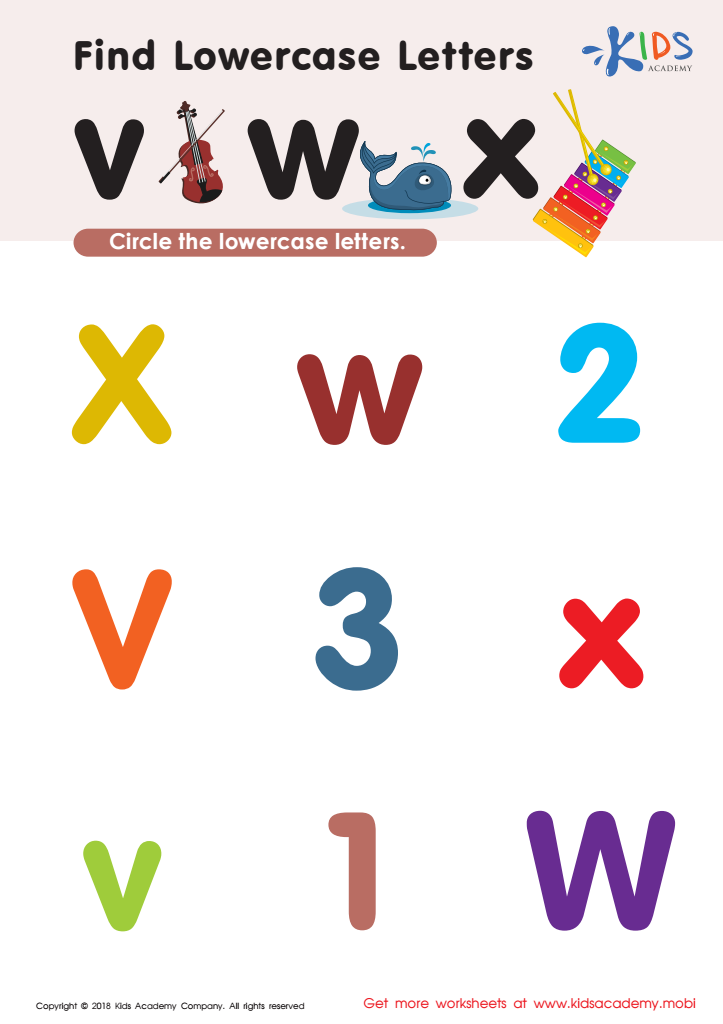

Find Lowercase Letters v w x Worksheet
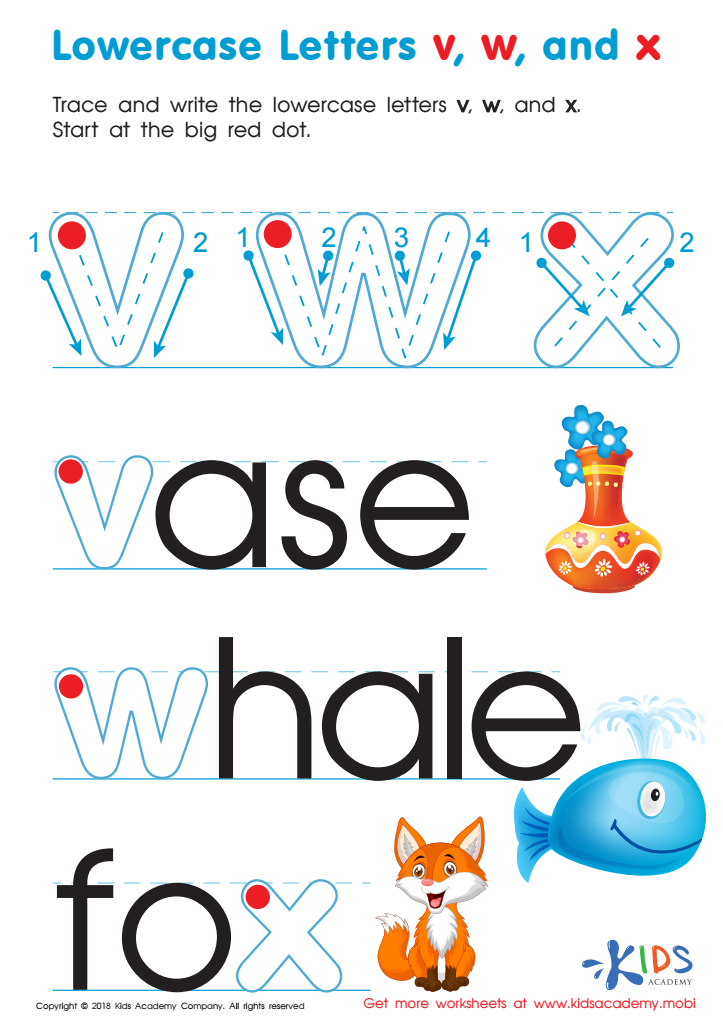

Lowercase Letters v w x Worksheet
Fine motor skills are crucial for 5-year-olds as they lay the foundation for essential daily activities and academic success. At this age, children are developing the dexterity needed to perform tasks such as writing, cutting, and manipulating small objects. Mastery of fine motor skills enables them to effectively form letters, especially lowercase ones, which is important for their early literacy.
When children learn to write lowercase letters properly, they enhance their spelling and reading abilities, as this skill is intertwined with language development. Furthermore, strong fine motor skills contribute to greater self-confidence. Children who can write neatly and manage tasks independently are more likely to engage positively in their learning environment.
Parents and teachers should prioritize the development of these skills through fun, engaging activities like drawing, crafts, or playing with small toys. Supporting fine motor development not only aids in academic achievement but also fosters independence and self-esteem in young learners. By providing opportunities for practice, parents and teachers play a vital role in ensuring children are prepared for future educational challenges. Ultimately, fostering these skills in early childhood leads to a smoother transition into primary school and lifelong learning.
 Assign to My Students
Assign to My Students




